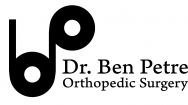Rotator Cuff Tears or Strains
The rotator cuff is a group of four muscles in the shoulder that help control the ball and socket joint. They are crucial to keep the ball centered in the socket throughout the normal motion of the shoulder. The four muscles are the teres minor, the infraspinatous, the supraspinatous and the subscapularis. The supraspinatous is the most commonly injured. Rotator cuff injuries vary greatly from simple strains or bruises to massive complete tears of the tendons. They can be from an acute injury to the shoulder or simply wearing out of the tendons from years of use. Commonly, rotator cuff injuries cause shoulder pain, difficulty with sleep, and weakness.
Non-Operative Treatment
Non-operative treatment is often the first line of treatment for rotator cuff injuries. If the tendons are strained or torn less than 50%, they respond well to an aggressive non-operative approach. Non-operative measures can include physical therapy, oral or injected medications, biologic augmentation such as PRP, ultrasound therapy, dry needling, and other modalities. It will often take 3 months to recover with non-operative measures. Dr. Petre will tailor the proper treatment for you and guide you through the process.
Surgery for the Rotator Cuff
Surgery for the rotator cuff can be for complete tears, or partial tears/strains that fail to get better. If a torn rotator cuff goes untreated for too long, it may become un-repairable and so shoulder pain should not be ignored. Surgery often consists of removing damaged tissue and repairing the good tissue back to the bone. Bone spurs and inflammation (bursitis) is also removed to try to prevent re-tears. Dr Petre specializes in all arthroscopic rotator cuff repairs and can fix most tears through 4-5 small incisions. On occasion a patch needs to be placed on the rotator cuff tendons which requires a larger incision. Many times, the biceps tendon is damaged with rotator cuff tears and may also require biceps tenodesis surgery at the same time.
Rehab
The rehab for rotator cuff surgery falls into three basic categories; some damage to the tendons with surgery consisting of debridement, removing spurs and cleaning out inflammation, tears requiring repair with excellent quality tendon tissue, and tears requiring repair with poor quality tendon tissue. The first category , rehab consists of early active and passive range of motion exercises focused on maintaining range of motion for 4 weeks and then strengthening and return to sports from weeks 4-8. Repaired tendons with excellent quality will begin full passive motion early, start active motion from weeks 4-8, strengthening from 8-12 and return to sports after 3-4 months. Repairs with poor tissue quality will have no motion early on, start passive motion after 2-4 weeks, active at 6-8 weeks, strengthening at 4 months and return to sports at 6 months. Dr. Petre will guide you through the rehabilitation process.
